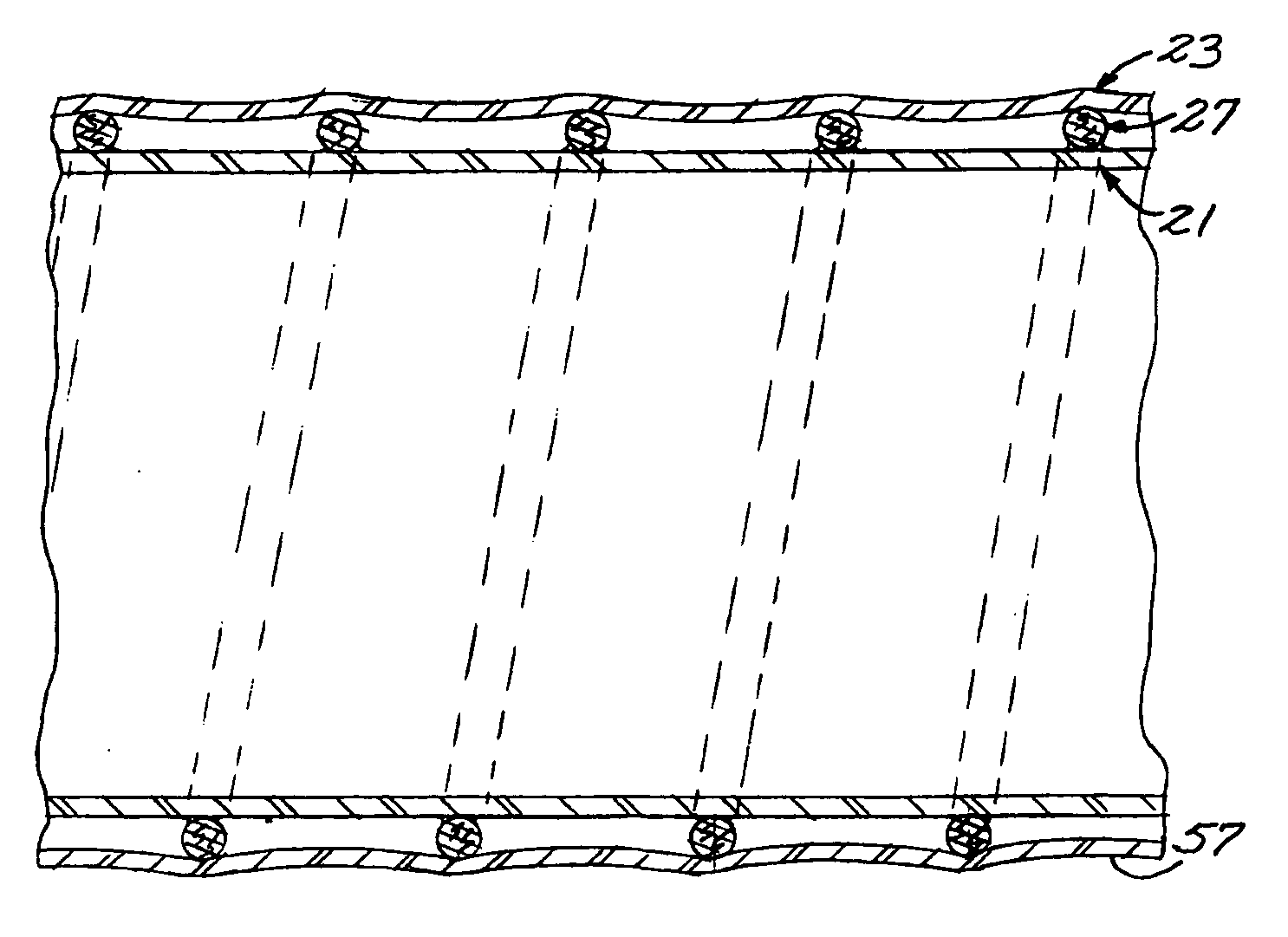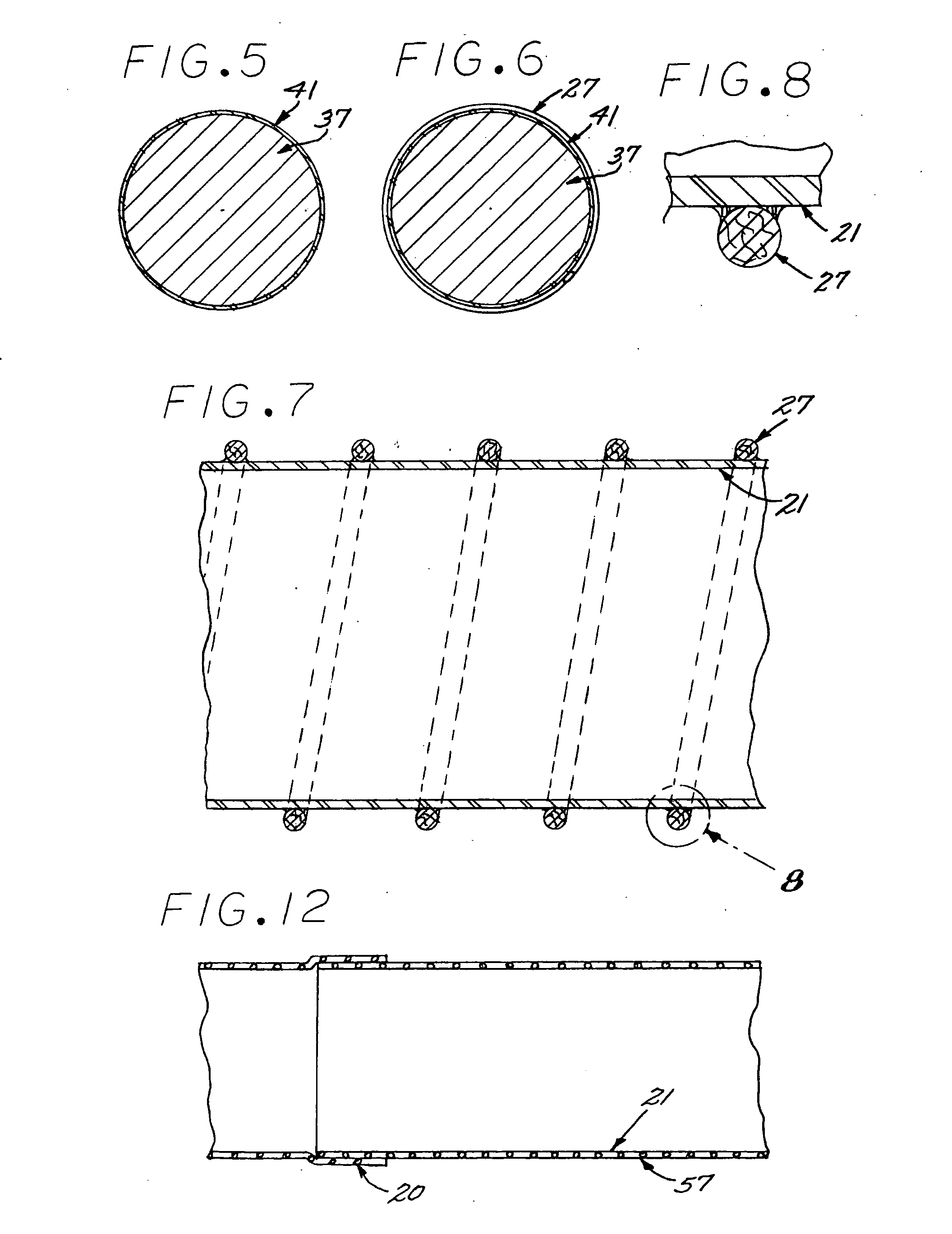Heat shrunk double wall, self-insulating, lightweight duct
a double wall, lightweight technology, applied in the direction of flexible pipes, pipe protection by thermal insulation, pipe protection, etc., can solve the problems of time-consuming manufacture and installation, undesirable weight of insulation blankets, and undesirable weight of insulation blankets, and achieve high flow rates and high temperatures
- Summary
- Abstract
- Description
- Claims
- Application Information
AI Technical Summary
Benefits of technology
Problems solved by technology
Method used
Image
Examples
Embodiment Construction
[0029] The lightweight self-insulated duct device of the present invention includes, concentric inner and outer tubes 21 and 23 constructed of an ultra thin flame resistant polymer such as polyetherether keytone. The walls cooperate to form therebetween an annulus 25 housing a helical reinforcing element, generally designated 27, which may also be constructed as a polymer such as polyethersulfone and, in the preferred embodiment, also serves as a radial spacer for establishing the radial thickness of the annulus 25. The outer tube 23 is formed by stretching it to a diameter substantially larger than that of the wrapped inner tube so it can be conveniently telescoped there over. Heat may then be applied to shrink it into position as shown in FIG. 10 to constrain the cord and inner tube while trapping air in the annulus 25.
[0030] Commercial aircraft have typically utilized flexible and rigid ducts of varying diameters and configuration for circulating air within cabin and for cooling...
PUM
 Login to View More
Login to View More Abstract
Description
Claims
Application Information
 Login to View More
Login to View More - R&D
- Intellectual Property
- Life Sciences
- Materials
- Tech Scout
- Unparalleled Data Quality
- Higher Quality Content
- 60% Fewer Hallucinations
Browse by: Latest US Patents, China's latest patents, Technical Efficacy Thesaurus, Application Domain, Technology Topic, Popular Technical Reports.
© 2025 PatSnap. All rights reserved.Legal|Privacy policy|Modern Slavery Act Transparency Statement|Sitemap|About US| Contact US: help@patsnap.com



